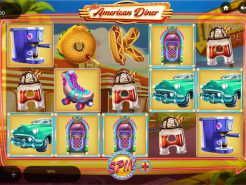Blackjack Dealer Hits on Soft 17
When playing blackjack, you may encounter tables with a rule stating that the dealer hits on soft 17. This rule can significantly affect the game and your overall strategy, so it's important to understand what it means and how it impacts your odds of winning.
What Is a Soft 17?
A "soft 17" refers to a hand where the total includes an Ace valued as 11 and other cards adding up to six, such as an Ace and a 6. The Ace can be counted as either 11 or 1, giving the hand some flexibility. For example, if the dealer draws a 10 on top of this hand, the Ace will drop to a value of 1, keeping the total under 21. This differs from a "hard 17," which would consist of a hand without the flexible Ace, such as a 10 and a 7.
Dealer Hits vs. Dealer Stands on Soft 17
Blackjack rules vary between casinos, and one of the most important variations concerns how the dealer handles soft 17. At some tables, the dealer must hit on soft 17, meaning they will draw an additional card. At others, the dealer stands on soft 17, meaning they will not draw any more cards, stopping at that total.
When a dealer is required to hit on soft 17, it increases the chances that they will improve their hand to a higher total (closer to 21). However, it also increases the likelihood of the dealer busting (exceeding 21), especially if they draw cards that push the total too high. This rule generally benefits the casino, as it raises the dealer’s potential to outscore the player without busting.
How Hitting on Soft 17 Affects Your Strategy
When the dealer hits on soft 17, it slightly increases the house edge, typically by about 0.22%. While this may seem small, it can make a noticeable difference over the long term, especially for players who rely on strategies to minimize the house edge.
Here are a few adjustments you should consider when playing at a table where the dealer hits on soft 17:
- Double Down Strategy: When the dealer hits on soft 17, it becomes more advantageous to double down on hands where you're likely to win before the dealer improves their hand. For example, hands like soft 19 or soft 20 are strong candidates for doubling down, as the dealer's chances of improving from a soft 17 are higher.
- Standing on Hard 18: If the dealer hits on soft 17, standing on a hard 18 (such as a 10 and 8) becomes more important. Although hard 18 is not a very strong hand, the dealer’s increased chances of busting make it less likely that you’ll lose by standing.
- Doubling on 11: When the dealer hits on soft 17, it may also be more beneficial to double down when you hold a hard 11. Since the dealer’s chances of improving are higher, this strategy helps you capitalize on situations where you can beat the dealer’s hand early.
How the Rule Affects Your Odds
The difference between the dealer hitting or standing on soft 17 may seem small, but it’s enough to change the long-term odds of the game. When the dealer stands on soft 17, the house edge is lower, making it more favorable for players. When the dealer hits, the house edge increases, giving the casino a slight advantage.
In short, the dealer hitting on soft 17 means players have to play more aggressively and adjust their strategy accordingly to maintain their edge. The potential for the dealer to improve their hand creates more uncertainty for the player, making it a riskier version of the game.
Conclusion
Understanding the rule that requires the dealer to hit on soft 17 is critical for blackjack players, as it alters the dynamics of the game. While this rule benefits the house slightly, players can still improve their chances of winning by adapting their strategies, such as adjusting when to double down or stand. Always check the rules at the table before you sit down to play, and remember that small changes in strategy can make a big difference over the long term.

